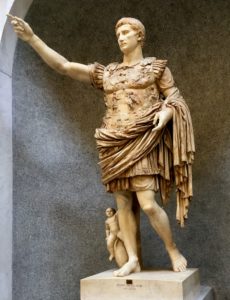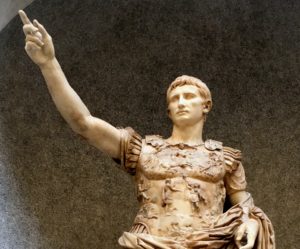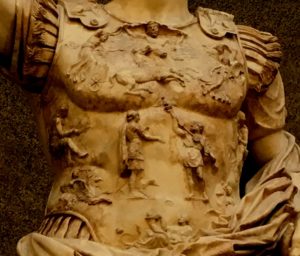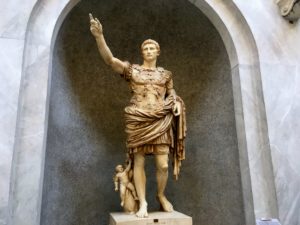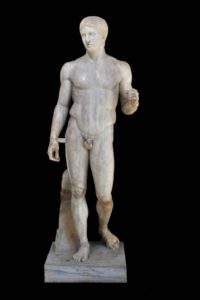AUGUSTUS FROM PRIMA PORTA (Vatican Museum)
AUGUSTUS FROM PRIMA PORTA (Augusto di Prima Porta) From Vatican Museum, Rome
The statue of Augustus has been dated to the beginning of the 1st century A.D. It was found in the ruins of the Villa of Livia, Augustus’s wife at Prima Porta on the via Flaminia. It’s a statue of the emperor himself, wearing highly decorated cuirass and with his cloak wrapped around his hips, in the act of addressing his troops.
The reliefs on the cuirass show a Parthian king in in the act of returning to a Roman officer the standards lost by Crassus in 53 B.C. during the Battle of Carrhae. At the sides are figures from the two provinces of empire. The whole scene is inserted into a cosmic landscape.
At the top one can see the personification of the Heavens in the center, with the chariots of Apollo and Aurora alongside. At the bottom we can see Diana (Artemis) riding on the back of a hind and, in the center the goddess Earth.
The statue seems to have been inspired by the figure of the Doryphoros (spear-bearer) by the Greek sculptor Polykleitos of which there is a good copy in the Braccio Nuovo (in Naples Museum).
Doryphoros
The sculpture, which was found at via delle Scuole in the so-called Samnite Gymnasium, dates to the Augustan period or between the end of the second century and the beginning of the first century BC according to the context. It served the purpose of reminding young aristocrats that they belonged to the classical world and to the ideals of Greek culture. Considered as the most complete copy of the bronze Doryphoros by Polykleitos, it represents a young naked spear-bearer.


